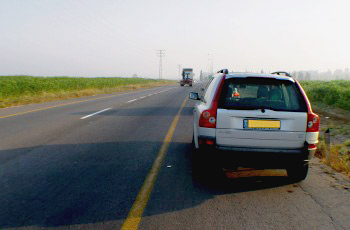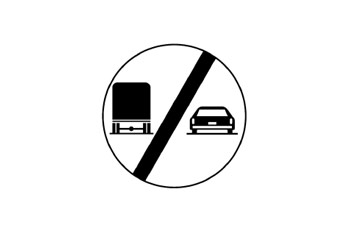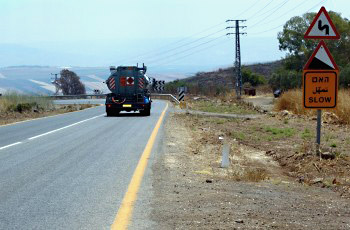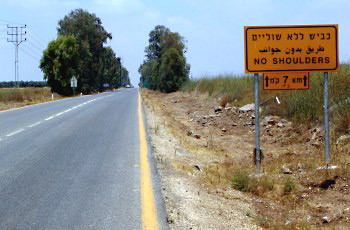Question:1
What is the speed limit for a Class A motorcycle (unless indicated otherwise by any traffic sign)?
Category : Rules and Regulations
Question:2
Does an agricultural trailer require a warning triangle?
Category : Rules and Regulations
Question:3
When there is fog, a part from fog lights.
Category : Safety
Question:4
What problem faces a vehicle driver who is driving at a high speed?
Category : Safety
Question:5
Which of the following road signs should be placed after road sign 135?

Category : Traffic Signs
Question:6
“You are allowed to drive under the influence of alcohol, as long as you do not mix different types of drinks”: Correct or incorrect?
Category : Safety
Question:7
When are you required to turn on the direction indicators and signal?
Category : Rules and Regulations
Question:8
Which trailer can be towed by a class B driver’s license holder using a vehicle that is approved for towing?
Category : Rules and Regulations
Question:9
Who is responsible for the stability and weight distribution of the cargo that is carried on a vehicle?
Category : Rules and Regulations
Question:10
The law requires to install a third license plates in these types of vehicles:
Category : Rules and Regulations
Question:11
The license of a “New driver” will not be renewed as a regular drivers license, if he is convicted of:
Category : Rules and Regulations
Question:12
Where would you stand your vehicle after being required to pull onto the “hard shoulder”?

Category : Safety
Question:13
The auxiliary (parking/hand) brake may also be used:
Category : Know Your Vehicle
Question:14
Is it permitted to drive under the influence of an intoxicating alcoholic drink?
Category : Rules and Regulations
Question:15
What is the meaning of the following traffic sign?

Category : Traffic Signs
Question:16
Is it obligatory to install a mirror on a motorcycle?
Category : Rules and Regulations
Question:17
What risk is a driver facing while making a right turn?
Category : Safety
Question:18
Do the regulation applying to bus passengers apply also to taxi passengers?
Category : Rules and Regulations
Question:19
How is it required to mark freight that sticks out from the vehicle’s rear side?
Category : Rules and Regulations
Question:20
Which class of license is required for driving a commercial motor vehicle with an all up weight of more than 12,000 kg?
Category : Rules and Regulations
Question:21
Is it permitted to drive a motorcycle in which a pressure exhaust is installed?
Category : Rules and Regulations
Question:22
On a sharp curve, slow down:

Category : Safety
Question:23
Can a short refreshment break whilst driving lessen the driver’s tiredness?
Category : Safety
Question:24
A “new driver” aged less than 21 years (or has not completed two years from the date of receiving a "new driver" license) cannot transport in a vehicle:
Category : Rules and Regulations
Question:25
Who is permitted to repair vehicle safety part failures?
Category : Know Your Vehicle
Question:26
Apart from a driving instructor, who may escort a “new driver”?
Category : Rules and Regulations
Question:27
When is it obligatory to place a warning triangle?
Category : Rules and Regulations
Question:28
Under what terms is it permitted to transport hazardous materials?
Category : Rules and Regulations
Question:29
How would you conduct yourself according to the content of the following traffic sign?

Category : Safety
Question:30
On a semi-trailer, what is the required distance, , between the driver’s cab and the front wall of the trailer?
Category : Rules and Regulations

